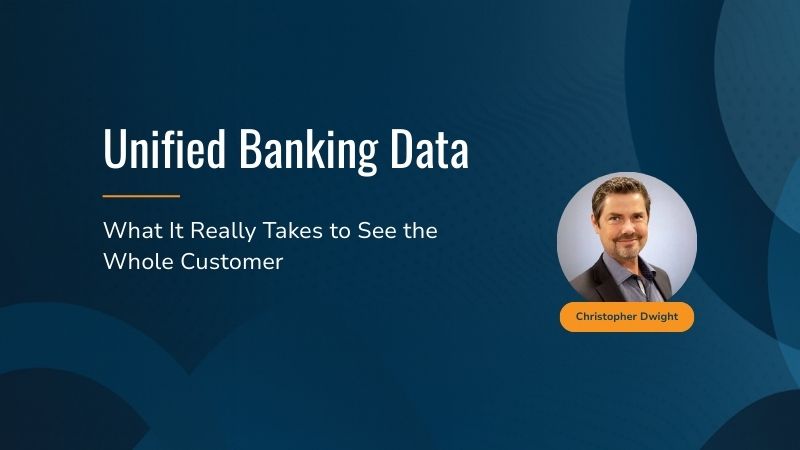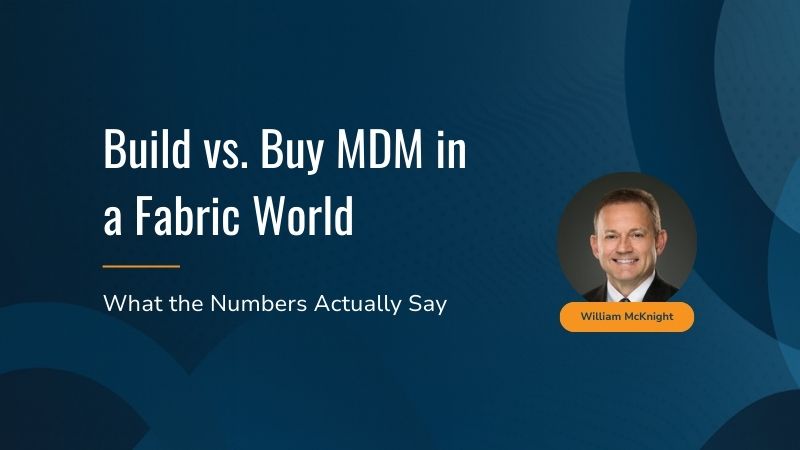Over the years, we’ve seen a number of patterns within our customer’s projects. These patterns have pointed to the common best practices our most successful customers always follow. In the context of a MDM program, very few organizations implementing a data management program bother to define success and set measurable goals from the start. Here are some of the best practices companies do to ensure success long term.
1. Define the metrics upfront
Deciding what you are going to measure before a project helps on the back end, so you can clearly see your results. If you don’t decide on metrics upfront, the challenge becomes more about the best scientific practices. This approach often leads to a manipulation of the data you have because you are looking for the positive benefits and contriving details that weren’t there. It also leaves you with blind spots that keep you from having complete clarity on what is going well or needs to change.
The best practice is to reach an agreement upfront with all the stakeholders, and define what success looks like and how to best measure it.
At the end of the project, once you measure the outcome, no one can debate whether or not the results are valuable since they were defined from the start.
2. Outline specific metrics
Focus in on what you would like to discover at the end of a project. If you know specifically what you’re wanting to measure in the end, you know how to focus the business problems for consulting to solve. If you’re doing a phased approach and find other instances where the technology is going to help, you can make sure those are represented from the start. You can also find more measurements you can focus on later.
Don’t wait until the end to justify the project with measurements you didn’t come up with before you implemented something.
Whether it’s the second or third phase, you want to make sure to focus on those specific business problems early and then know what the measurement of success is.
If you’re struggling to come up with something to measure, you probably haven’t found good business challenges to address. It is vital for every business challenge to bring some metric around either revenue, cost, or your ability to mitigate some aspect of risk. If you don’t have this, continue to narrow down your focus until you can define a specific metric.
3. Capture your measurements
While striving to be more data-driven, it is also important to make better decisions in capturing your measurements. By first deciding on the measurements you want, and then consistently capturing them, you can begin to learn from your mistakes and take the necessary steps toward improvement. In the same vein, you also can’t repeat successes if you aren’t consistently capturing your measurements because you don’t know exactly what led to the success.
In every project you should be building in margin and making the effort to capture the data, so you can talk through it once the project is complete.From there, you can decipher where you are and make course corrections for the future. Making appropriate changes and improving the overall process will help you reduce costs and streamline cash flow. Ultimately, you’ve got to have measurements just like you do in every other process inside your organization. This data will prove to be invaluable as you continue to see the positive benefits of capturing measurements to track success.
4. Track individual productivity
Nobody has a sales organization—certainly not a large or successful one—if they aren’t actually measuring the productivity of individuals. This is true in all areas of business. That is why data management within projects is business critical. Companies should understand data on multiple levels to accurately know how they are preforming. This includes product data, employee data, customer data, and the other assets of the organization. If you aren’t collecting and analyzing all of this data, you don’t have a clear view of how your company is performing overall.
Now what?
As far as MDM goes, the best practice is to first make sure you have something to measure that is agreed upon prior to implementing the project. Once the project is complete, you’re able to use these measurements to help justify and prove the value of the program.
Having these measurements show trends over time and add great value to the “why” behind what you do.
It could be the value you expected to see isn’t there, but knowing this earlier, rather than several iterations into a project, can save your company time and money. Figuring out your blind spots and pivoting when necessary is vital for healthy, sustainable growth.
Ask yourself these questions:
-
Are you good stewards of your data?
-
Are you leveraging the data you have to its full capacity?
-
What are some growth areas you could work toward to achieve better data stewardship?
By asking these questions, you begin to have a better picture of where your company is. You are also able to build measurable steps toward a more holistic view of your data. Once you see the whole picture, you profit from having the ability to know if you are hitting the mark or need to pivot.
Are you ready to move your company toward better data stewardship to boost profit and eliminate time waste?
Learn more about Profisee and how we can help here.

Forrest Brown
Forrest Brown is the Content Marketing Manager at Profisee and has been writing about B2B tech for eight years, spanning software categories like project management, enterprise resource planning (ERP) and now master data management (MDM). When he's not at work, Forrest enjoys playing music, writing and exploring the Atlanta food scene.











